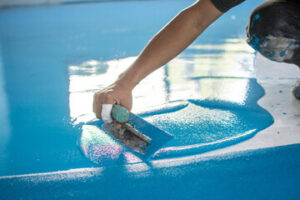SEO is a set of best practices to help your content rank higher on search engine results pages. These include on-page optimization, keyword research, and site security. Emerging verticals such as voice, local, and image search have different requirements but still rely on core SEO practices. Click https://www.rankboss.com/ to learn more.
Keywords are one of the most fundamental components of search engine optimization and the starting point for creating a winning SEO strategy. You can increase traffic and conversions by carefully analyzing keywords and optimizing them on your website. In addition, keywords can be used to target specific demographics. Using keywords has evolved over time, but they remain a critical component in connecting with your audience and understanding market needs.

When selecting keywords, consider the search intent of the users who are looking for those words. This will help you create content that meets their needs and improve your chances of ranking in the organic or paid search results. For example, if someone searches for “how to ride a skateboard,” it is likely that they are looking for instruction on how to do so. A skateboard business would be wise to rank or display ads for this search term and create helpful blog posts with detailed instructions.
Search intent is also important when choosing keywords for PPC campaigns. For instance, you should avoid using keywords that are too broad, as this will lead to a low click-through rate and a higher cost per click. To avoid this, use the Google AdWords Keyword Planner to find relevant keywords. This tool can help you select keywords with the highest potential to drive clicks and convert.
Besides keyword selection, it is also essential to optimize your on-page content for keywords. This is an ongoing process, and it can be a time-consuming and laborious task. However, it is crucial for your SEO success. The best way to optimize your on-page content is by using keyword-rich title tags, meta descriptions, and URLs.
The first step is to determine what keywords you want to target. Start with a broad keyword like “tile” and narrow down the list to more specific keywords, such as “marble tile,” “white tile,” and “affordable tile.” Then, use a tool like WordTracker or Power Thesaurus to find synonyms for your chosen words. Be sure to check the volume and competition for each of these keywords before implementing them in your campaign.
Content
Content is the cornerstone of a website, and it is an integral part of search engine optimization (SEO). It signals to search engines that you are worth recommending, allows you to get in front of your target audience, and offers tremendous opportunities to grow your business. Content can take many forms, including web pages, social media posts, email, whitepapers, infographics, and more. It should be original and readable. It is important to remember that duplicate content can have a negative impact on your SEO. However, social media doesn’t have the same rules, and you can often find repurposed content on these platforms.
SEO content is written with search engines in mind to ensure that it can be found and ranked highly on search results pages. This includes creating unique titles, meta descriptions, and URLs. It also involves optimizing content for specific keywords and phrases. Content that is optimized for search is more likely to be relevant and useful to the user and will increase the likelihood of them clicking on it and visiting the site.
One of the most important things to consider when creating content for SEO is the audience. Create content that is valuable to your customers, and you will be rewarded with higher rankings in organic search.
Writing for SEO starts with keyword research. This is the process of identifying and researching words and phrases that people use to find your content online. This information can then be used to optimize your content for search engine results.
Another element of creating good SEO content is the structure. It should be readable and easily scannable. This means using short paragraphs and adding visuals to your content. It is also important to refresh and update your content regularly. This will help your website to keep up with the latest trends and news in your industry.
In order to make your content more SEO friendly, it is important to include keywords in the title and description of your page. This will help Google to understand what your page is about, and will also encourage users to click on it. In addition, it is important to include relevant keywords in your URL, as this can help improve your ranking on the search engine result page.
Link building
Link building is an important part of SEO and can help your website achieve higher rankings. However, there are a few things to keep in mind when it comes to link building. For example, you should only build links that will benefit your website. You should also avoid using manipulative techniques, which are referred to as black-hat SEO, because they can lead to Google banning your site from search results altogether. Instead, try to focus on creating quality content that is relevant to your audience. This will help you gain credibility and increase your chances of getting more links.
First, you must have something worth linking to. This can be anything from a blog post to a tool or research study. In many cases, these assets exist before you begin your link-building campaign, but it’s important to understand that not every asset is going to be link-worthy. For example, a tool that can calculate meaningful statistics for your industry will likely receive more links than a simple blog post that discusses the same topic.
Another way to build links is by asking for them. This is often done through guest blogging and outreach. You can find prospect sites by searching for your competitors’ keywords or by leveraging Semrush’s Link Building Tool. Once you have a list of prospects, you can reach out to them to ask for a link.
In addition, you can build links by promoting your content in social media and on other platforms. You can even create a blog where you share your content and promote it with other bloggers in your niche. This will not only help you attract more readers, but it can also boost your ranking.
Lastly, you can also use link-building strategies that involve getting links from authoritative sites. While this can take time, it is essential to your search engine optimization efforts. It can improve your domain authority, which will boost your website’s overall ranking. However, you must remember that if you get links from low-quality websites, this can have a negative effect on your search engine rankings.
Analytics
SEO analytics is the process of collecting, tracking, and analyzing data related to search engine optimization. Using this information, marketers can make informed decisions that improve performance and maximize ROI. It helps them understand when changes are happening and why they are occurring. It also allows them to track the impact of their efforts on organic traffic.
SEO Analytics consists of several key metrics and KPIs, which are quantifiable values that provide insight into a website’s performance. Metrics provide a general overview of your site’s current standings, while KPIs are specific goals that align with your marketing objectives. Some examples of SEO KPIs include page views, session duration and the number of new visitors.
These metrics help you identify potential opportunities for conversion optimization. For example, if a certain page has high session duration but low traffic, it may be time to optimize the content and structure of that page. Moreover, SEO analytics can help you identify technical issues that are limiting your site’s search visibility and traffic. These problems could be caused by errors in the HTML code, broken links, or slow page load times.
A good way to start with SEO analytics is by identifying the keywords that are most valuable to your business and then tracking their performance over time. This can be done with a keyword rank tracker tool like Semrush. These tools provide you with the ability to analyze keywords based on their search volume, competition level and current rankings, which can help you set a benchmark and recognize opportunities for improvement.
Another important metric is the average time spent on a particular page. This can be determined by dividing the total number of visits by the number of pages visited. This can reveal which pages are most effective at converting visitors into customers and identify areas for improvement.
By using a SEO analytics tool, you can automate these processes and save hours of manual spreadsheet work. With this tool, you can create white-labeled client dashboards and reports with the click of a button. This can help you better convey your SEO results to clients and demonstrate your agency’s value.








